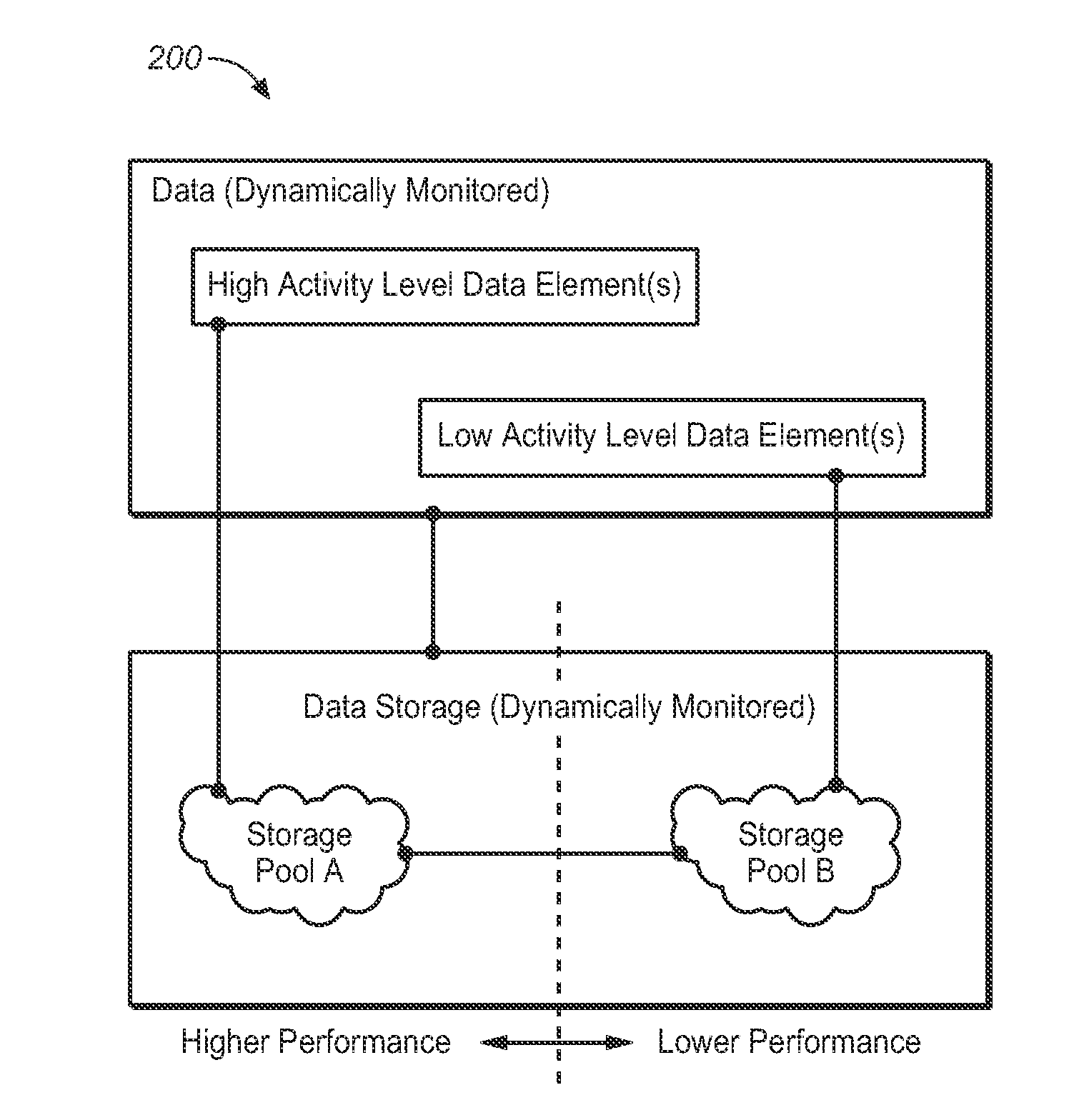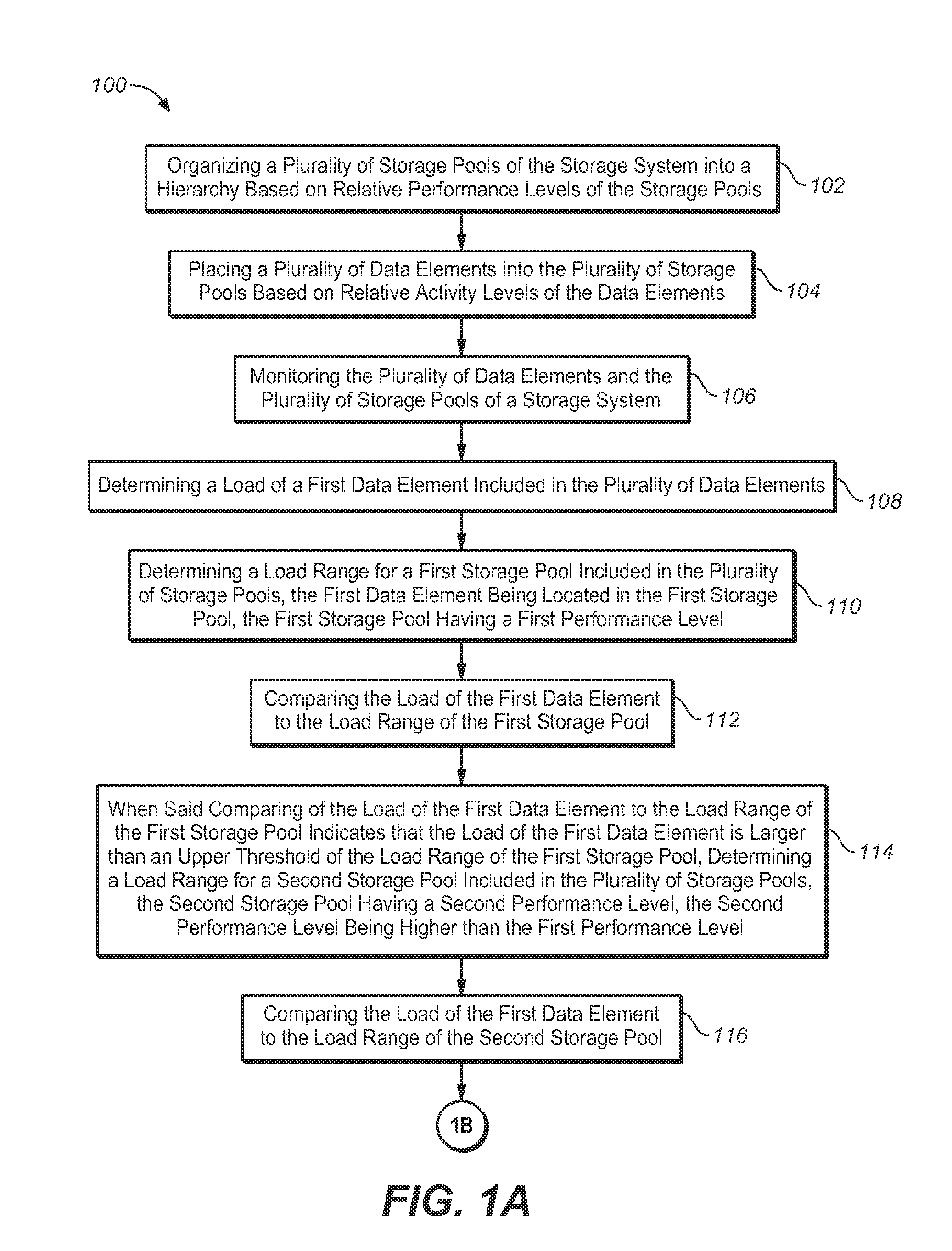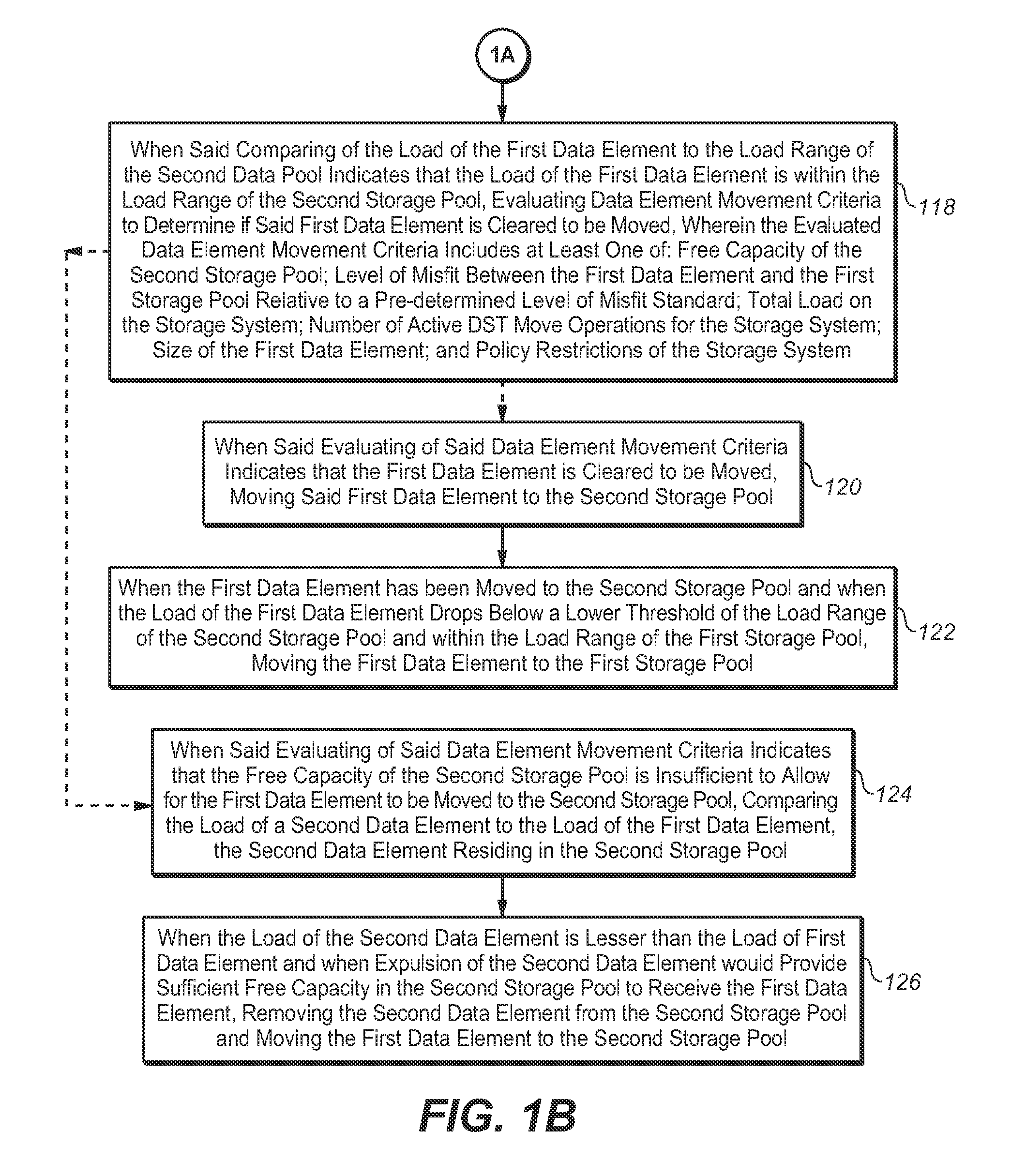Method for placement of virtual volume hot-spots in storage pools using ongoing load measurements and ranking
a technology of virtual volume and storage pool, applied in the direction of memory address/allocation/relocation, instruments, program control, etc., can solve the problem that the method of providing data management in data storage system may not provide the desired level of performan
- Summary
- Abstract
- Description
- Claims
- Application Information
AI Technical Summary
Benefits of technology
Problems solved by technology
Method used
Image
Examples
Embodiment Construction
[0011]Reference will now be made in detail to the presently preferred embodiments of the invention, examples of which are illustrated in the accompanying drawings.
[0012]Dynamic Storage Tiering (DST) is the concept of grouping storage devices of a storage system into tiers based upon their characteristics, and relocating data dynamically to leverage specific capabilities of the storage devices. Such relocating requires that the data be classified in a manner that allows a DST mechanism to place particular elements of the data in their optimal tiers. DST may apply to several different Quality of Service (QoS) attributes of a storage tier. In the present invention, DST-based performance management of a storage system is described.
[0013]For performance management, the objective of the DST mechanism of the present invention is to identify data that has a high activity level and place it into high performance storage tiers (ex.—high performance storage pools). It is equally important to i...
PUM
 Login to View More
Login to View More Abstract
Description
Claims
Application Information
 Login to View More
Login to View More - R&D
- Intellectual Property
- Life Sciences
- Materials
- Tech Scout
- Unparalleled Data Quality
- Higher Quality Content
- 60% Fewer Hallucinations
Browse by: Latest US Patents, China's latest patents, Technical Efficacy Thesaurus, Application Domain, Technology Topic, Popular Technical Reports.
© 2025 PatSnap. All rights reserved.Legal|Privacy policy|Modern Slavery Act Transparency Statement|Sitemap|About US| Contact US: help@patsnap.com



